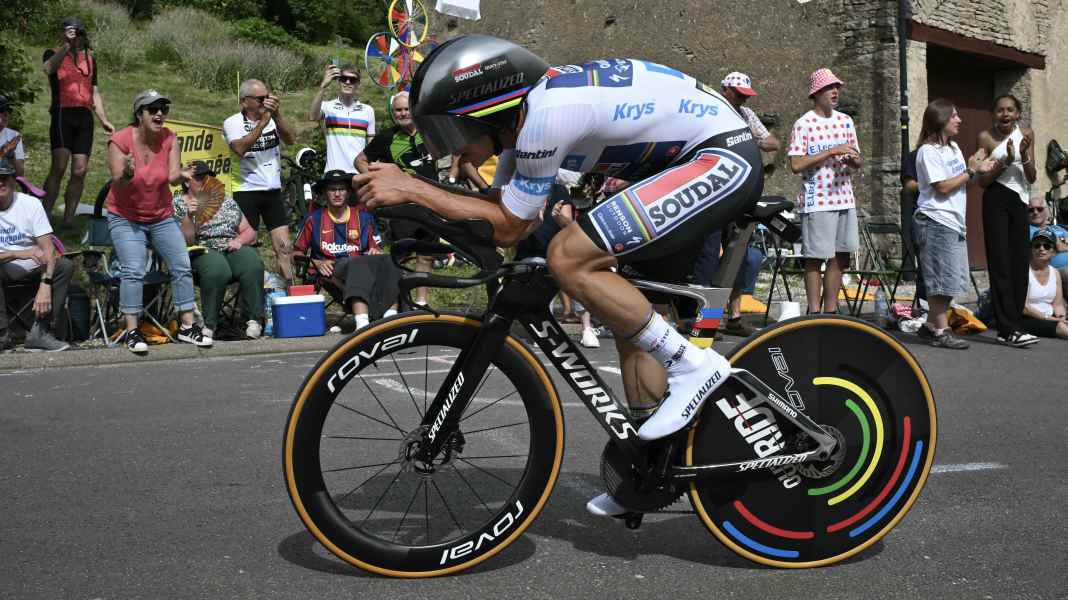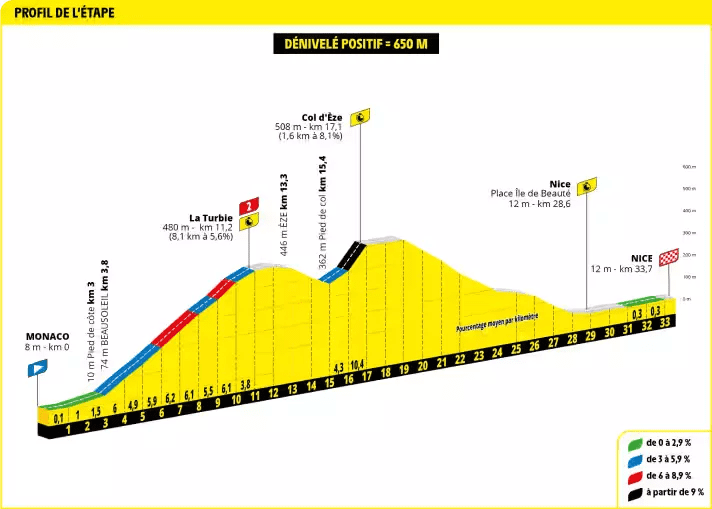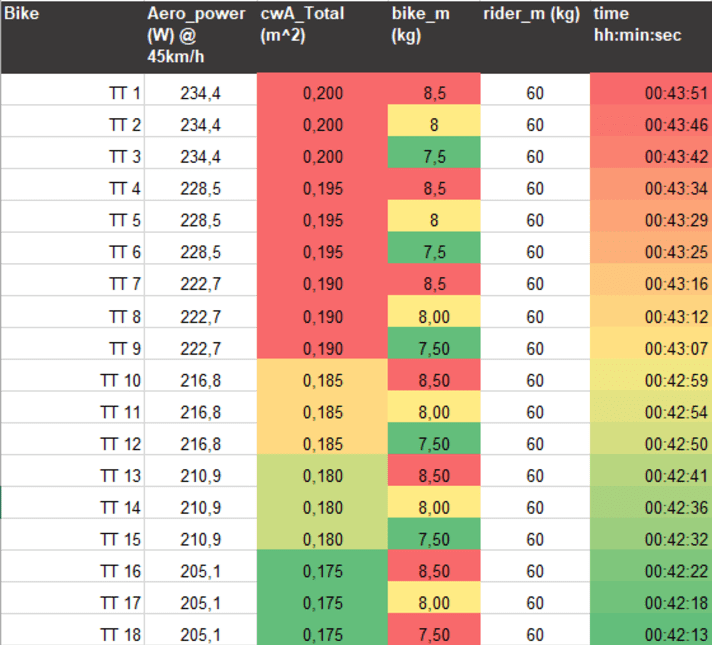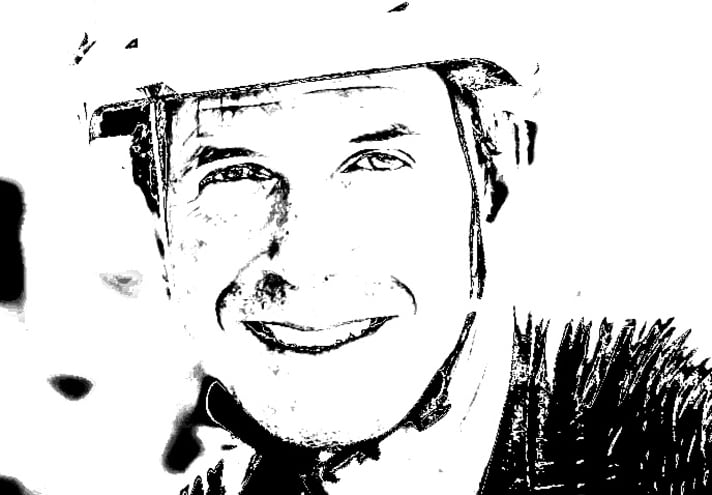
Tour de France 2024 - Stage 21: Monaco - Nizza | 34 Kilometers (Time trial)

Final act: The 21st stage is the final moment of truth, a time trial from Monaco to Nice - with a home advantage for Tadej Pogacar, who lives in Monaco and should know every pebble on the route. Knowledge of the route is an important factor in mastering the descent from the Col d’Eze to Nice. The route has a series of high-speed bends, including four hairpin bends in the lower section.
However, there are also a total of 650 vertical meters to climb - which is a lot on a TT bike. Would a bike change potentially be an advantage? We think not. The climbs are moderate except for the last section to the Col d’Eze, where the top riders ride at over 30 km/h uphill - an aerodynamically relevant speed.
The time trial bike is also faster in the flowing sections of the descent, and in the flat finale anyway. A wheel change would take around 15 seconds. That’s more than could be saved with a lighter road bike. All in all, we therefore see a change as a disadvantage.
Modern time trial bikes benefit greatly from disc brakes, especially on a course like today. In the days of rim brakes with carbon rims, a course like today’s was a very dangerous mission because the brakes on the time trial bikes often worked very poorly.
With disc brakes, control is much better today. What has remained is the extreme riding position. Riders definitely have to train to control the TT bike downhill. But the top riders will have done just that. We are again feeding our simulation for today’s stage with data from fictitious TT bikes, as we have no usable data on the bikes at the start.
Number of the day: 47.9 km/h
Our simulation shows that we can expect an average of 47.9 km/h for the fastest riders - in a mountainous time trial!
Anyone who rides a bike can only marvel at these figures. The key to this performance is the overall package of strong legs and extremely sophisticated aerodynamics. Only those who can control the airflow can reach these levels. One kilogram of extra weight, on the other hand, only slows down the ride by nine seconds.
Overview of different time trial configurations

Table: The calculated times for stage 21 with different time trial set-ups. Based on our experience with the first time trial of this tour, we can expect the fastest calculated configuration to be close to reality.
Our expert

Robert Kühnen studied mechanical engineering, writes for TOUR about technology and training topics and develops testing methods. Robert has been refining the simulation calculations for years, they are also used by professional teams.
